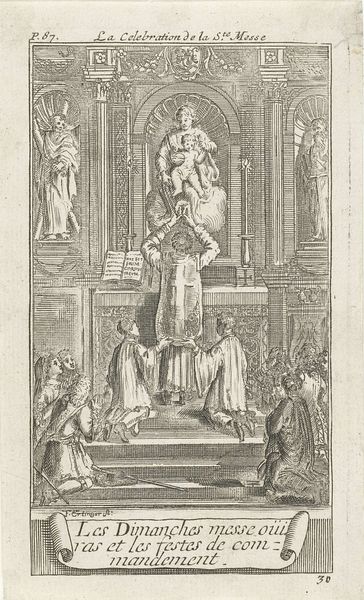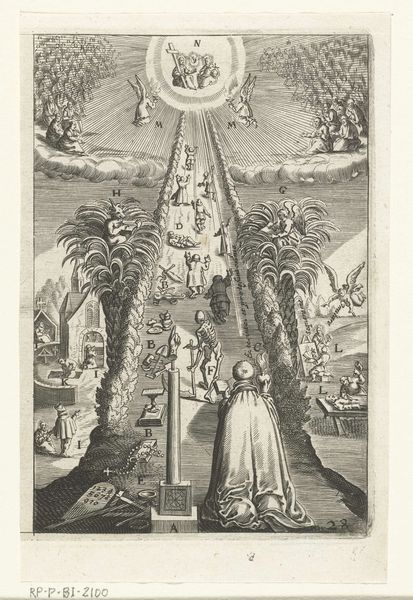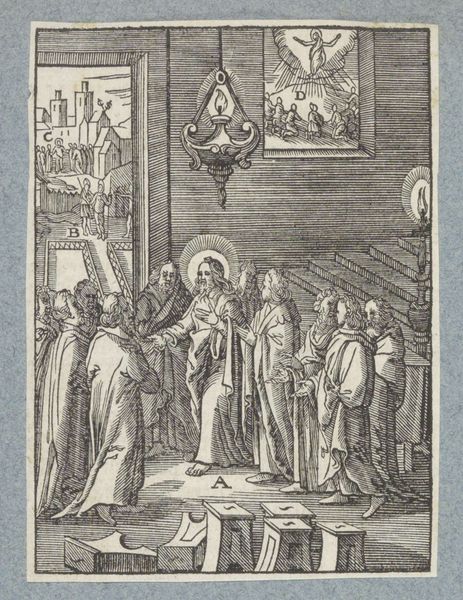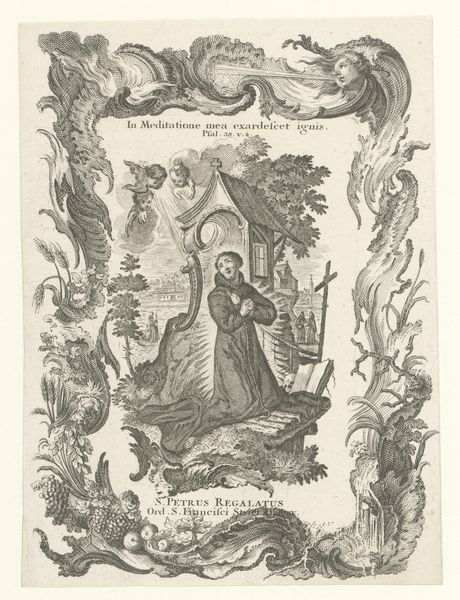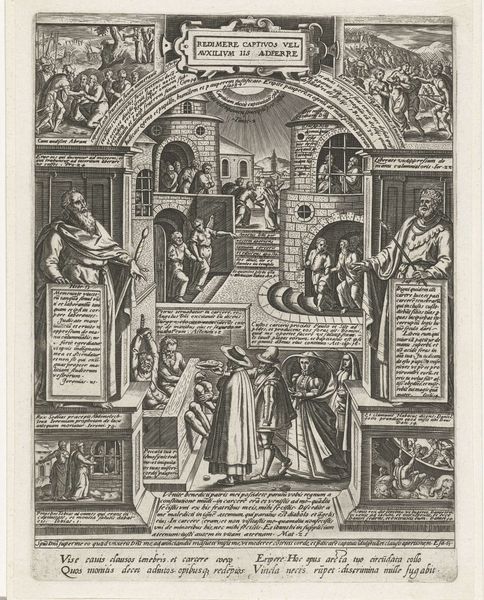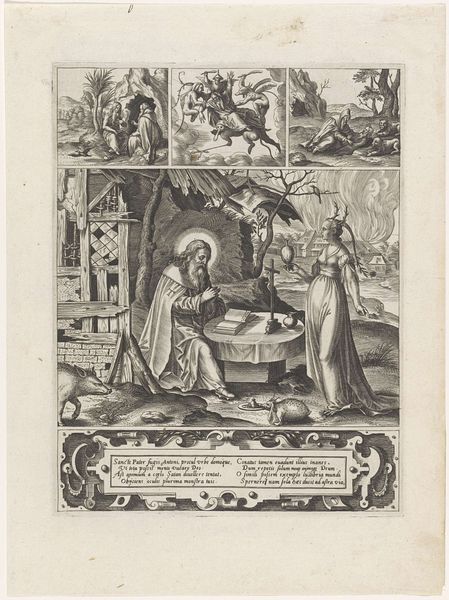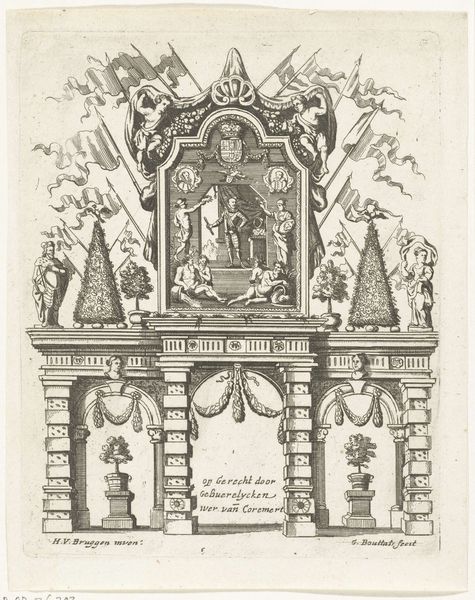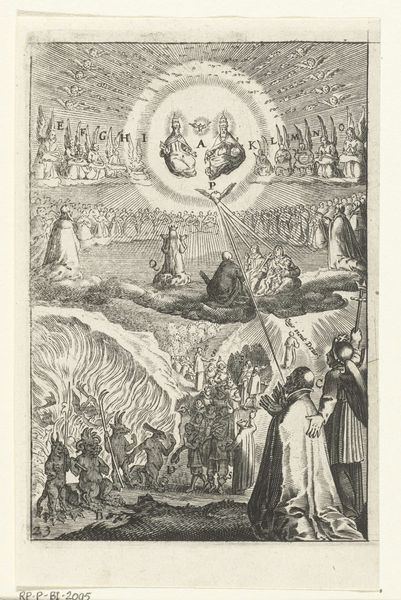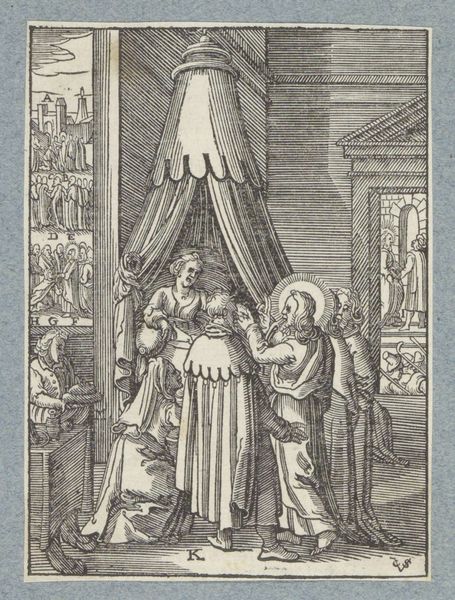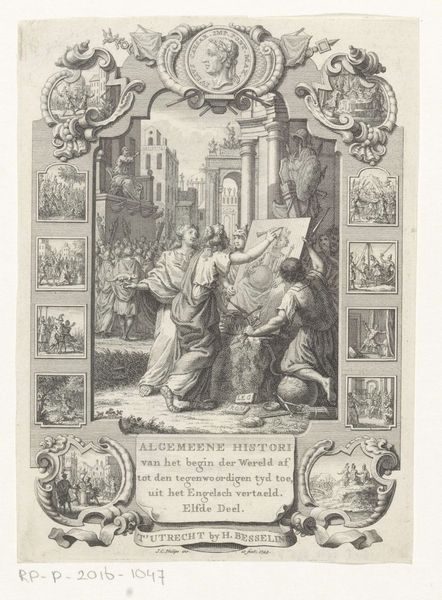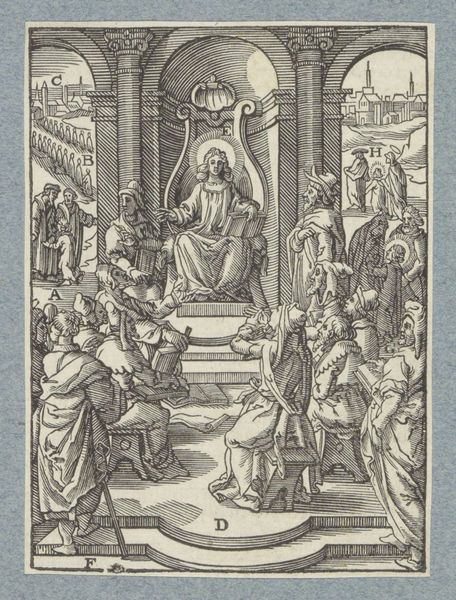
Embleem met Maria en Kind die vereerd worden door zielen in de hemel en een man 1620
0:00
0:00
boetiusadamszbolswert
Rijksmuseum
print, engraving
#
allegory
#
baroque
# print
#
pen illustration
#
figuration
#
engraving
Dimensions: height 140 mm, width 97 mm
Copyright: Rijks Museum: Open Domain
This emblem of the Virgin and Child was made by Boëtius Adamsz. Bolswert, using the technique of engraving. Look closely, and you’ll see that the image is composed entirely of lines, cut into a metal plate with a tool called a burin. Engraving like this was part of the print industry. It allowed images to be reproduced in large numbers, acting as a form of mass media in its day. The sharp, precise lines create a sense of clarity and detail, perfectly suited for depicting complex religious scenes. The layers of meaning in the image are like the process of its making: carefully considered and incised on the viewer’s mind. Note how the composition is divided into earthly and heavenly realms, connected by themes of salvation, death, and after-life. This print acted as a vehicle for devotion, and also as a kind of symbolic instruction. Ultimately, the printmaking process itself—laborious and demanding—mirrors the spiritual journey it illustrates, requiring patience, skill, and a commitment to detail. It's a reminder that the making of an image can be as meaningful as the image itself.
Comments
No comments
Be the first to comment and join the conversation on the ultimate creative platform.
